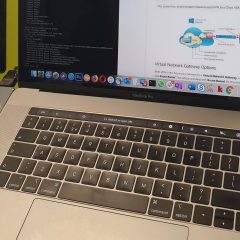How to Tell if Windows is 32 or 64 bit
KB ID 0000153 Problem If you want to know what version (x64 or x86) of Windows you are running, then this is the simplest way to find out. Solution Under accessories run system information; Under System Type: If it says x86 then it’s 32 bit. However if it says x64 then it’s 64 bit. Windows XP and Server 2003 1. Click Start > Run > sysdm.cpl {enter} > General Tab. Windows XP x32 (x86) and Windows XP x64 Windows...
ASDM on Windows 10: ‘Cannot find Javaw.exe?’
KB ID 0001478 Problem Windows 10 machine, (with Latest Java installed), while attempting to launch the ASDM you see; Windows cannot find ‘javaw.exe’. Make sure you typed the name correctly, and then try again. Solution I should have fixed this a lot quicker than I did, because the error message was a lot more descriptive in older versions of Windows and the ASDM! This is the same problem seen on Windows 8. You still need...
Using 32 and 64 Bit WMI Filters For Group Policy
KB ID 0001341 Problem I was trying to deploy some client AV packages today, there was an x86 version (x32 Bit) and a x64 bit version of the client software. As I was deploying the software via Group Policy I needed to write a different policy for each package. Then I needed to make sure the x32 bit client only deployed to x32 bit machines, and the 64 bit client only deployed to x64 bit machines. To do that you need a simple WMI...
Terminal Server / Remote Desktop Services Server – Printer Not Working (Adding Print Drivers)
KB ID 0000850 Problem Windows Server 2008 R2 and 2012 are a lot better with printing support over remote desktop, that their predecessors were. But to be able to print to your remote users ‘local’ machines. The TS/RDP server still likes to have the correct drivers installed. What about Easy Print? Easy Print (Introduced with Server 2008 R2) is a ‘proxy’ service that simply sends all print processes to the...
WDS – “The Network Path was not found” when adding an Unattend file
KB ID 0000487 Problem Saw this last week, while trying to use an unattended file for the roll out of some machines with WDS. Every time you try and enter a value you get “The network path was not found” error, no combination of file path or UNC path seems to cure the problem. Solution This is a “work around” not a fix, essentially it will not accept any value you put into the path without throwing and error. If...




